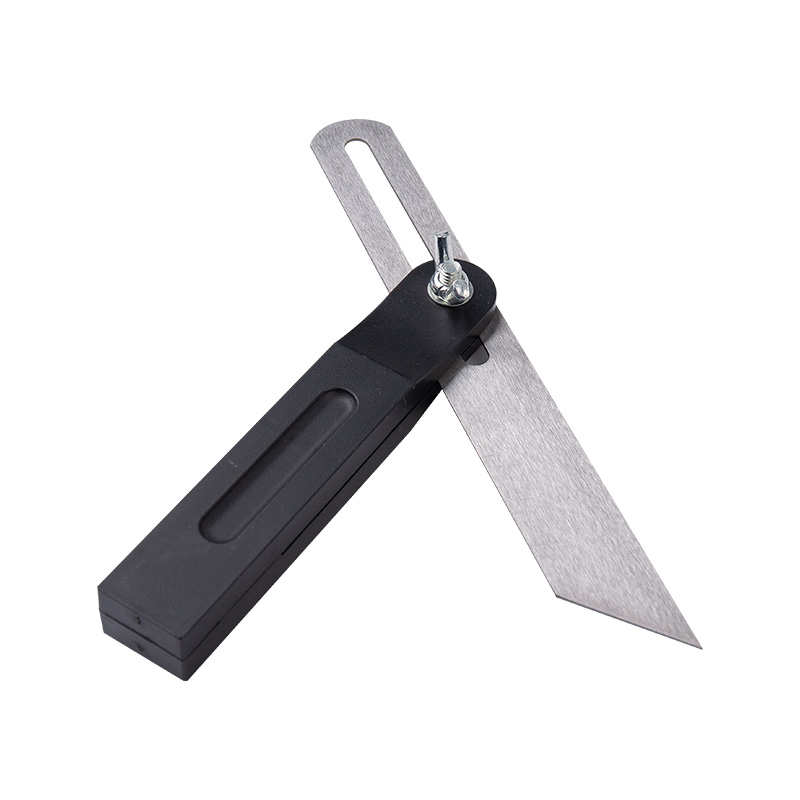In woodworking, a sliding T-bevel is a versatile tool that is commonly used for various tasks including:
Marking and transferring angles: Sliding T-bevels are indispensable for woodworkers when it comes to accurately marking and transferring angles onto workpieces. This process involves carefully aligning the sliding T-bevel with the desired angle and then using it as a guide to mark the angle onto the wood surface. Woodworkers rely on the adjustable blade of the sliding T-bevel to fine-tune the angle to perfection, ensuring that cuts and joinery are executed with utmost precision. Whether it's creating angled cuts for joinery or marking out intricate design elements, the sliding T-bevel enables woodworkers to achieve unparalleled accuracy in their work.
Setting miter saw angles: Miter saws are a staple in woodworking workshops for making precise angled cuts, and sliding T-bevels play a crucial role in setting these angles accurately. Woodworkers use the sliding T-bevel to measure the desired angle, then lock it in place and transfer the measurement to the miter saw. This ensures that each cut is made with precision, whether it's a simple miter cut for framing or a complex compound cut for intricate joinery. By leveraging the versatility and adjustability of the sliding T-bevel, woodworkers can achieve flawless miter cuts that meet the exact specifications of their projects.
Checking and adjusting bevels: Bevels are a common feature in woodworking, used to create angled edges and surfaces that enhance the aesthetic appeal of the finished piece. Sliding T-bevels are indispensable for verifying the accuracy of existing bevels and making adjustments as needed. Woodworkers use the sliding T-bevel to compare the angle of the bevel with the desired measurement, then fine-tune it accordingly to achieve the perfect angle. Whether it's adjusting the bevel on a table saw or hand plane, the sliding T-bevel allows woodworkers to maintain precision and consistency in their work, resulting in impeccably crafted bevels that elevate the quality of their projects.
Creating chamfers and bevels: Chamfers and bevels are commonly used in woodworking to add visual interest and dimension to edges and surfaces. Sliding T-bevels are invaluable for marking precise lines for chamfers and bevels, guiding the cutting process to achieve crisp and uniform results. Woodworkers rely on the accuracy and adjustability of sliding T-bevels to execute chamfers and bevels with precision, enhancing the overall aesthetics of their projects. Whether it's creating a decorative edge on a tabletop or adding detail to a cabinet door, the sliding T-bevel empowers woodworkers to achieve professional-quality results with ease.
Layout and design: Woodworking projects often require meticulous planning and layout to ensure that components fit together seamlessly and achieve the desired aesthetic and functional goals. Sliding T-bevels facilitate this process by allowing woodworkers to accurately measure and mark angles during the design phase. By visualizing and planning complex angles and shapes, woodworkers can optimize material usage, anticipate joinery challenges, and create detailed plans for efficient project execution. Whether it's designing a custom piece of furniture or laying out a complex joinery pattern, the sliding T-bevel provides woodworkers with the precision and flexibility needed to bring their creative vision to life.
Plastic handle sliding T-bevel


